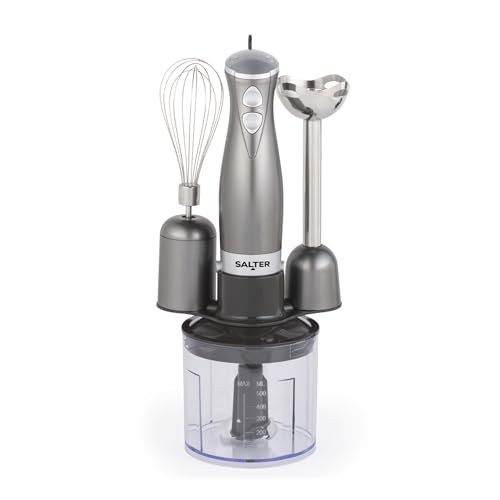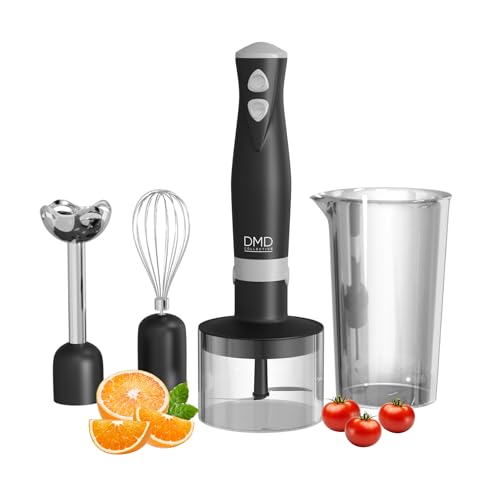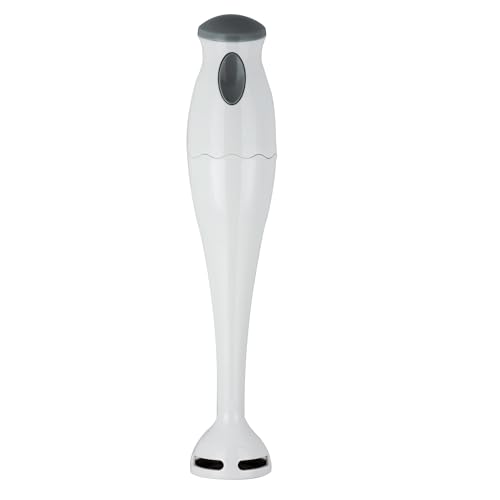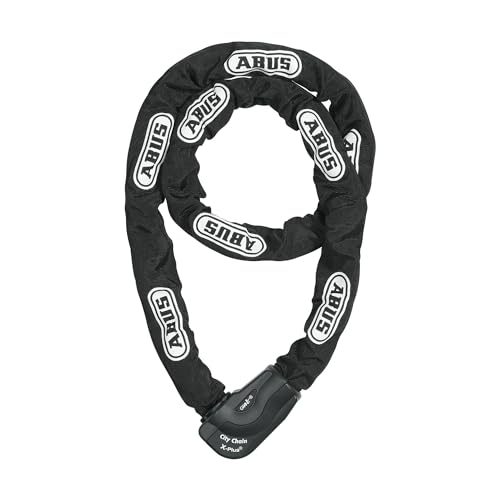Introduction to Hand Blenders: Why We Love Them
Convenience and Versatility
Hand blenders, also known as immersion blenders, are a fantastic addition to any kitchen due to their convenience and versatility. They are typically lightweight and easy to manoeuvre, allowing us to blend, purée, and emulsify directly in the pot or bowl we’re using. This means less mess and fewer dishes to clean up after cooking, which is something we all appreciate. Whether we’re making soups, smoothies, sauces, or even whipping cream, a hand blender helps us achieve our culinary goals with ease.
Space-Saving Design
Unlike traditional blenders that can take up quite a bit of space on our countertops or in storage cabinets, hand blenders often have a compact design. We can easily store them in a drawer or hang them on a hook, making them ideal for smaller kitchens or for those of us who prefer to keep our cooking spaces uncluttered.
Affordable Options
Additionally, hand blenders come in a range of prices, allowing us to find an option that fits our budget. Whether we’re looking for a simple model for occasional use or a more powerful version for heavier tasks, there’s something for everyone.
Key Features to Look For: Getting the Best for Your Kitchen
Power and Motor Speed
When selecting a hand blender, consider the power and motor speed. A blender with at least 200 watts is ideal for most tasks, while a more powerful motor can handle tougher blending jobs. Higher motor speeds can also give us smoother results, particularly with fibrous ingredients like spinach or kale.
Blade Quality
The quality of the blades is also crucial. Look for models with stainless steel blades, as they are durable and maintain sharpness over time. Some blenders have multiple blade options that can be swapped out for different tasks, providing even more versatility.
Ergonomic Design
An ergonomic design should not be overlooked. Since we will be holding the hand blender for extended periods, a comfortable grip makes the experience much better. Look for soft-touch materials and well-placed controls that are easy to operate.
Attachments and Accessories
Check for additional attachments such as whisk or chopper attachments. These accessories expand the functionality of the hand blender, making it suitable for preparing a greater variety of dishes.
Cable Length and Cordless Options
Finally, consider the cord length; a longer cord allows for more flexibility while using the blender. Some units even offer cordless options, which provide total freedom of movement in the kitchen.
How to Use a Hand Blender: A Step-by-Step Guide for Beginners
Preparation First
Before using the hand blender, prepare your ingredients. Have everything chopped into manageable pieces and ensure that they are in a suitable container, ideally a deep bowl or pot that prevents splatter.
Getting Started
Once ready, plug in your hand blender, ensuring it’s within easy reach. Immerse the blending head into your ingredients before turning it on. This prevents food from splattering everywhere during mixing.
Blending Technique
Start blending at a low speed to incorporate your ingredients, gradually increasing the speed as necessary. Move the blender up and down and around the container to ensure even blending. For larger batches, we can take our time and go section by section to achieve a uniform texture.
Finishing Up and Cleaning
Once we are satisfied with the blend, simply lift the blender out of the container, turn it off, and immerse it in warm, soapy water for cleaning. Many hand blenders come with detachable blending heads that can be rinsed under running water for easier maintenance.
Top Hand Blender Recommendations: Our Favourite Picks
Mid-Range Option
For those seeking a balance between performance and value, we recommend checking out the mid-range options that combine solid blending power with a variety of attachments, making them versatile for most cooking tasks.
High-End Option
If budget allows, a high-end hand blender will typically come with a more powerful motor, additional accessories, and often a sleek design. These features make them suitable for those who want to use their blender frequently for challenging tasks.
Budget-Friendly Pick
For those on a tighter budget, consistently reliable budget-friendly models are available. They may have fewer features or lower power, but they still get the job done for everyday blending needs.
Maintenance and Care: Keeping Your Hand Blender in Top Shape
Regular Cleaning
To extend the life of our hand blender, regular cleaning is essential. After each use, detach the blending head and rinse it under warm water. For tougher stains, a little soap will do the trick.
Avoiding Damage
Be cautious not to immerse the motor part in water, as this can cause damage. Instead, simply wipe it down with a damp cloth. It’s also advisable to avoid using the blender in excessive heat or on hard surfaces which could dull the blades.
Periodic Inspection
We should periodically inspect the blades and motor for any wear and tear. If we notice any unusual noises or reduced performance, it may be time for repairs or to consider replacing the model.






















